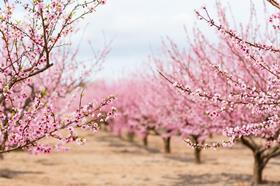
The Australian Bureau of Agricultural and Resource Economics and Sciences(ABARES) has said Australia’s agricultural industry will need to make, hard, long-term decisions to boost productivity and exports.
Speaking at the ABARES Outlook Conference in Canberra on 3 March, Steve Hatfield-Dodds, executive director of ABARES, said while Australian agriculture had enjoyed a favourable run, the industry needed to take steps to ensure its success in the future.
Hatfield-Dodds listed several steps that would be vital to meeting the National Farmer Federation’s goal of lifting the value of Australian agricultural production to A$100bn (US$65bn) over the next decade, including maintaining the trendtowards larger farms, as well as improvements in harnessing data and managing precious natural resources.
“Farm consolidation helps diffuse better management practices, and many technologies and capital equipment have economies of scale,” Hatfield-Dodds said.
While farmers were already adapting to drier conditions over the past two decades that were impacting on farm profits, Hatfield-Dodds said more challenges lay ahead.
“Moving from old patterns of water use to new ones can be disruptive. But it is also what puts food on the table and keeps industry profitable,” said Hatfield-Dodds.
“Recent perennial plantings, particularly of almonds, will help boost the value of Australian agriculture. That is important. These same almonds will also require more water as they come to maturity.
“This and other factors will see an ongoing trend towards higher average prices – benefiting entitlement holders but adding to the pressures on some farms and sectors.”
In an increasingly connected and competitive world, Hatfield-Dodds said the producers and exporters of tomorrow must continue to focus on understanding consumers’ wants and needs, including being ready tosubstantiate claims around clean, healthy, and sustainable food.
Farmers in the future could also benefit from being paid to deliverconservation and ecosystem services alongside existing agricultural production, potentially boosting landholder incomes substantially.
“I think the stars might be aligning to make this practical at scale, delivering a new source of income for farmers and a range of public good benefits to the wider community,” Hatfield-Dodds said.
“The future will not be like the past. We will need to anticipate, innovate and collaborate to stay ahead of the curve.”



